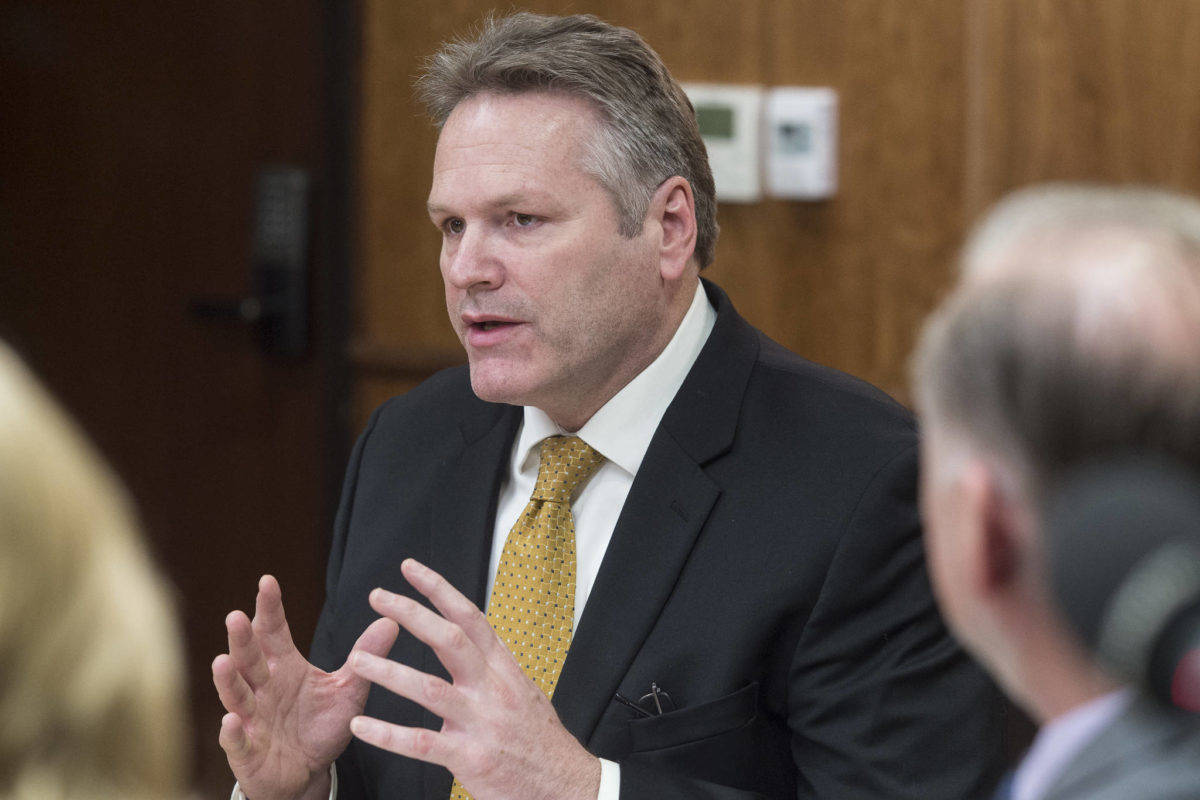The governor unveiled his plan for the state budget for the next decade.
Gov. Mike Dunleavy released his State of Alaska Fiscal Plan for this year through 2029 on Thursday.
“We can’t continue to spend more money than we have. My plan represents a vision of a smaller state government, with more money in the pockets of Alaskans while laying the foundation for new private sector investment and the new jobs that come with it,” Dunleavy said in a press release. “While reductions in state services are understandably difficult choices to make, Alaska must implement a permanent fiscal plan to get the economy moving again.”
The plan lays out his scenario of the budget for the next 10 years based on the spring 2019 revenue forecast, which assumes oil prices at an average of $66 per barrel.
“This plan presents a vision of a smaller, optimized State government that maintains essential services, while paying full dividends, growing the Permanent Fund, and avoiding broad-based taxes on everyday Alaskans,” according to the plan.
It was developed using the governor’s proposed FY2020 budget and legislative package as a starting point, and furthered the impact of those proposals over the nine subsequent fiscal years, according to the document.
His plan reduces state spending, includes a super-size PFD for the next three years, and doesn’t involve new taxes.
The document also lays out three other scenarios besides the one proposed by the governor.
One continues a trend of spending policies from the last three years, where the Legislature uses a draw from the permanent fund dividend and budget reserves to maintain current spending levels.
The second is a passive approach that only relies on savings. The plan describes this as the “kick the can down the road” approach, because it ultimately would run out of revenue to support the spending level.
The third scenario maintains current spending levels, pays the statutory PFD, protects current assets, and uses income taxes to support the budget.
Notably, some scenarios not included in this comparison are any that involve eliminating oil tax credits, which is a scenario some Democrats have argued for to bring in more revenue for the state.
The plan was drafted using models produced by the Buckeye Institute, according to the report. This institute is a right-wing advocacy group based in Ohio, according to Source Watch.
“It is a member of the $83 million-a-year State Policy Network (SPN),” according to Source Watch. “Although SPN’s member organizations claim to be nonpartisan and independent, the Center for Media and Democracy’s in-depth investigation, ‘EXPOSED: The State Policy Network — The Powerful Right-Wing Network Helping to Hijack State Politics and Government,’ reveals that SPN and its member think tanks are major drivers of the right-wing, American Legislative Exchange Council (ALEC)-backed corporate agenda in state houses nationwide, with deep ties to the Koch brothers and the national right-wing network of funders.”
A 2013 report by the Guardian also found that many SPN members had intent to change state laws and policies and some of their activities arguably crossed the line into lobbying.
The FY20-FY29 10-year plan is now available on the Office of Management and Budget’s website at www.omb.alaska.gov.
• Contact reporter Mollie Barnes at mbarnes@juneauempire.com.

